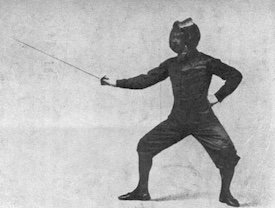Of course I’ve done the null test with every variable correct, why would I run an audio system or a test with deliberately the wrong gauge cables?
You mean have I tested every combination of every cable in every audio system? I’ve tested a fair few but obviously not every brand of cable in every audio system but that’s the point of science, I don’t need to, isn’t that obvious?
Presumably you don’t believe a “go faster” stripe/sticker can actually make a car go faster? How do you know it doesn’t, have you tried every “go faster” sticker on every model of car? Obviously you don’t need to, science knows enough about aerodynamics, power/weight and the other variables to predict a go faster stripe cannot make a significant difference and countless tests demonstrate no exceptions (punches) to this prediction.
I didn’t call it an analogy, you did! And, it is NOT an example, there are no consumer audio cables with a 1” diameter.
1. OK, 10awg that’s an extra 0.02” of diameter. So no, I didn’t see that punch coming or felt it either!
2. If you’re talking about a power cable rather than an audio cable, then we’re talking about a max frequency of 50Hz or 60Hz and there is no skin effect at those frequencies even with 0000awg!
Nonsense, it could hardly be less theorising and more demonstrated in practice!
1. What “personal experience”, you think maybe
@bfreedma and I are the only people who have ever objectively tested power or audio cables in the last 150 years?
2. You keep stating there are variables we haven’t accounted for but the only such variable you’ve mentioned is one that never exists in a consumer audio system! There are potentially a number of skin effect variables but they do not apply to consumer audio or power cables. For example wire material, there are no consumer audio or power cables made of Aluminium, steel or other materials, so that variable is irrelevant, as is the variable of freq loss above the range of human hearing, as is the variable of wire gauge/diameter because we never use a gauge so wide as to cause any significant/audible skin effect HF loss.
Why do we need to prove what has already been demonstrated/proven for a century or more? And, “Massive amounts of money” have already been spent. You think maybe the power and telecoms industries have never spent any money researching/testing wire variables for the last 150 years or so? Where do you think the equation you quoted came from?
If you want to dispute the long established/demonstrated science, you’re going to need to do way better than inapplicable examples, audiophile cable marketing or just claiming “you’re wrong because you’re cable haters”!! You can start, as others have suggested, with an actual (applicable) example.
G


























